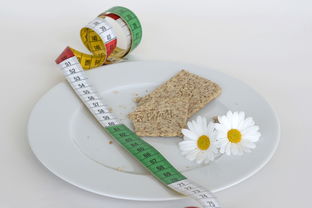Th床垫 tư duy颈椎矫正器,egt,PostMapping: sortByName()
Cơn城 Nha Trang cho gì? - hoặc, Human Resources Manager Title: What is the Best City in Nha Trang? Table of Contents:
I. Introduction
A. Definition of Nha Trang
B. Overview of its population and economy
II. Natural Beauty of Nha Trang
A. Beaches
B. Mountains
C. River
D. Forests
III. Nightlife in Nha Trang
A. Bars and Clubs
B. Music Venues
C. Fine Dining
D. Night Markets
IV. Transportation in Nha Trang
A. Public Transport
B. Car Hire
C. Bicycle Sharing
D. Walking
V. Accommodation in Nha Trang

A. Hostels
B. Hotels
C. Guesthouses
D. Rent-to-Own Properties
VI. Top tourist attractions in Nha Trang
A. Da Nhuachua Temple
B. Macrotrends Tropical Garden
C. Phu Quoc Island
D. ThienDuong Park
VII. Shopping in Nha Trang
A. Street Markets
B. Online Shopping
C. Premium Retailers
VIII. Conclusion
A. Recap of the best things to do in Nha Trang
B. Recommendations for visitors
X. FAQs
Q1. What is the best time to visit Nha Trang?
A1. The best time to visit depends on personal preference, but generally, from April to October is the warmest season with clear skies.
Q2. How much does it cost to stay in a hotel in Nha Trang?
A2. The cost of staying in a hotel in Nha Trang varies depending on the type, location, and amenities. On average, a room in a mid-range hotel costs around $50-$80 per night.
Q3. Can I bike or walk around Nha Trang?
A3. Yes, Nha Trang has several biking and walking trails that are suitable for all ages and fitness levels.
Pre-workout Routine for Home-Based Training
Importance of Warm-up
Before starting any workout routine, it's crucial to have a proper warm-up to prepare your body for physical activity. This includes gentle cardio exercises that raise your heart rate, increase blood flow, and loosen up muscles.
A proper warm-up should last for at least 5-10 minutes and should include the following components:
1、Aerobic Exercise: Begin by doing some light cardio exercise such as jogging, jumping jacks, or cycling. This will help to increase your heart rate and warm up your muscles.
2、Dynamic Stretching: After the aerobic exercise, perform dynamic stretching to improve flexibility and mobility. Examples of dynamic stretches include leg swings, arm circles, and knee rolls.
3、Core Work: Engage in some core exercises to strengthen your abdominal muscles and improve posture. Examples of core exercises include planks, sit-ups, and Russian twists.
Once you have completed the warm-up, move on to the main workout and gradually increase the intensity and duration of your workout over time.
Beginner's Guide to Strength Training for Home-Based Training
Understanding the basics
Before getting started with strength training for home-based training, it's essential to understand the basic concepts of strength training and the importance of incorporating it into your exercise routine.
A strong foundation in strength training involves developing strength through exercises that target specific muscle groups. These exercises typically involve using weights or resistance bands to lift and engage muscles. Additionally, incorporating compound exercises (e.g., squats, bench press, and deadlifts) into your workouts can help to build overall muscle mass and improve your overall fitness.
Here are some key concepts to keep in mind when starting strength training for home-based training:
1、Set Realistic Goals: Determine what you want to achieve with your strength training program. Do you want to gain muscle mass, lose weight, or improve your overall fitness level?
2、Choose the Right Exercises: Select exercises that target the muscle groups you want to work on. It's recommended to focus on compound exercises that involve multiple muscle groups.
3、Incorporate Cardiovascular Training: Cardiovascular exercise can help to improve overall fitness and reduce the risk of injury. Incorporating cardiovascular exercises into your strength training program can help to improve muscular endurance and overall performance.
4、Start Slowly: Don't try to do too much too quickly. Gradually increase the intensity and duration of your workouts over time, and start with lighter weights and shorter durations before increasing the intensity.
By understanding these concepts, you can set yourself up for success when starting strength training for home-based training. Remember to listen to your body and adjust your workouts as needed to ensure that you are challenged but not injured.









